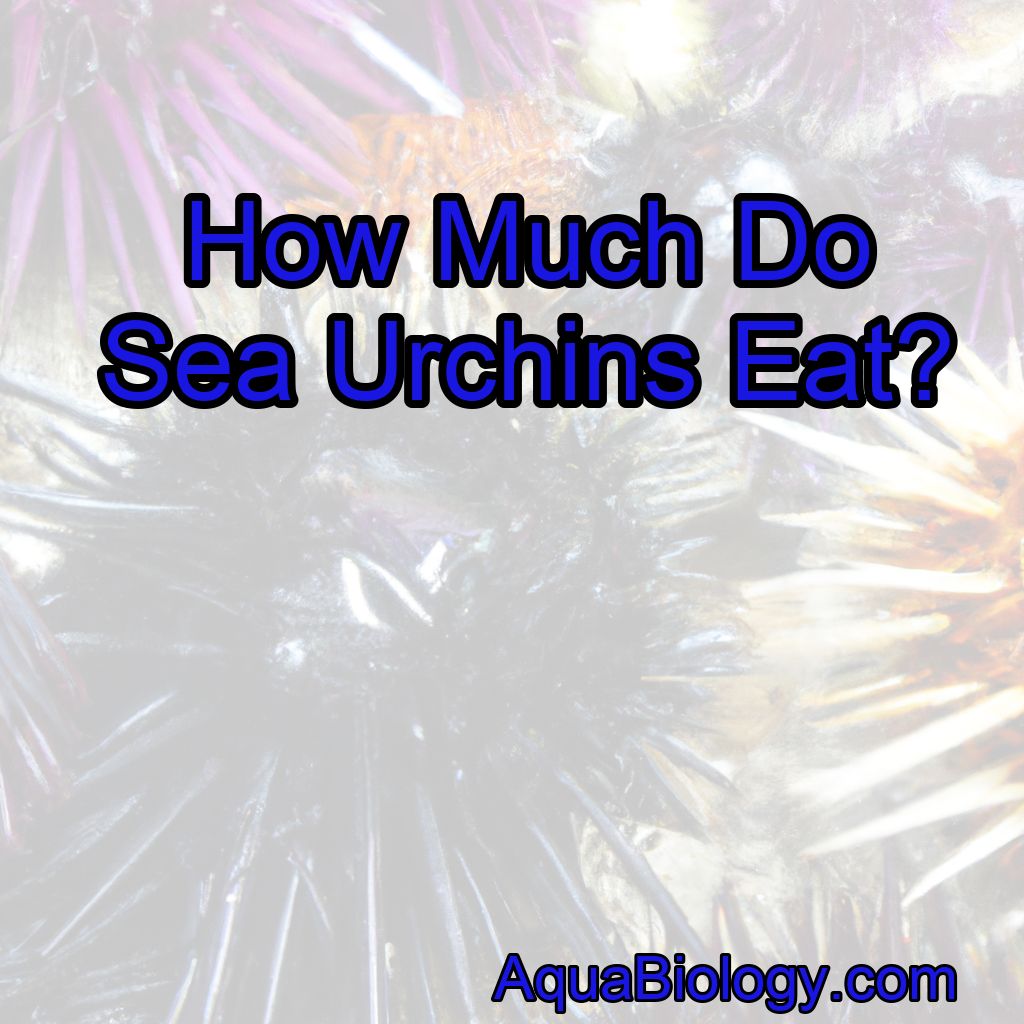As a marine biologist specializing in the study of sand dollars, I have always been fascinated by sea urchins and their feeding habits.
Sea urchins eat about 30-50% of their body weight daily.
These spiny creatures, also known as echinoids, have a unique way of consuming their food that sets them apart from other marine organisms.
In this blog post, we will explore the topic of how much sea urchins eat and dive into the intriguing details of their feeding behavior.
The Feeding Apparatus of Sea Urchins
To understand how much sea urchins eat, we must first examine their feeding apparatus.
Sea urchins possess a specialized structure called Aristotle’s lantern, which is located on the oral side of their body.
This complex system comprises five hard calcareous teeth, collectively known as dental plates, that are used to scrape and chew their food.
Sea urchins are primarily herbivorous, with a diet that consists mainly of algae and seaweed.
They use their dental plates to scrape and graze on the surfaces of rocks and other hard substrates, removing the algae in the process.
This feeding behavior not only helps sea urchins obtain nourishment but also plays a vital role in maintaining the ecological balance of their habitat.
The Feeding Rate of Sea Urchins
Sea urchins are known for their voracious appetite and can consume a significant amount of food in a short period. The feeding rate of sea urchins varies depending on factors such as the availability of food, temperature, and the size of the individual.
In laboratory studies, it has been observed that sea urchins can consume up to 2-3% of their body weight per day.
This may not sound like much, but considering that some species of sea urchins can weigh several pounds, the amount of food they consume can be substantial.
Impact on Marine Ecosystems

The feeding habits of sea urchins can have a profound impact on marine ecosystems. In areas where sea urchin populations are high and their food sources are limited, they can cause overgrazing and decimate entire kelp forests.
This can lead to a loss of habitat for other marine organisms and disrupt the balance of the ecosystem.
However, sea urchins also play a crucial role in maintaining the health of coral reefs. By grazing on algae that compete with corals for space and resources, sea urchins help promote the growth and survival of coral reefs.
Therefore, understanding the feeding habits of sea urchins is essential for effective marine conservation and ecosystem management.
Factors Affecting Sea Urchin Feeding
Several factors can influence the feeding behavior of sea urchins. One such factor is the availability and quality of food.
Sea urchins prefer certain types of algae and may consume more if their preferred food is abundant.
Temperature can also have an impact on sea urchin feeding.
Warmer temperatures can increase their metabolic rate, leading to increased feeding activity.
Conversely, colder temperatures may slow down their feeding rate.
The size of the sea urchin can also affect its feeding behavior. Larger individuals have a greater surface area for grazing and can consume more food compared to smaller individuals.
Reproductive Season and Feeding
During the reproductive season, sea urchins may reduce their feeding activity. This is because they allocate a significant amount of energy towards reproduction, such as the production of eggs and sperm.
As a result, their feeding rate may decrease during this period.
#
Conclusion: How Much Do Sea Urchins Eat?
In conclusion, sea urchins are voracious grazers that can consume a substantial amount of food in a day. They can consume up to 2-3% of their body weight per day, depending on factors such as food availability, temperature, and size.
Their feeding habits can have a significant impact on marine ecosystems, both positive and negative.
Key Facts:
1. Sea urchins can consume up to 2-3% of their body weight per day. 2. Their feeding behavior helps maintain the ecological balance of their habitat.
3. Sea urchins primarily feed on algae and seaweed. 4. They can cause overgrazing and disrupt marine ecosystems if their populations are high and food sources are limited.
5. Sea urchins play a crucial role in promoting the growth and survival of coral reefs by grazing on competing algae.
Understanding the feeding habits of sea urchins is essential for marine conservation and ecosystem management.
By studying their feeding behavior, we can gain valuable insights into the delicate interactions that shape our oceans and work towards their protection and preservation.
FAQs
Are sea urchins bottom feeders?
Yes, sea urchins are bottom feeders.
They typically graze on algae and other small organisms found on the ocean floor.
What is a sea urchins favorite food?
Sea urchins feed on a variety of things, including algae, seaweed, and small invertebrates.
However, their favorite food is typically considered to be kelp.
What feeding niche is a sea urchin?
Sea urchins are primarily herbivores, feeding on algae and other plant matter, making them a grazing feeding niche.
What do sea urchins eat the most?
Sea urchins primarily feed on algae and other small marine organisms, such as plankton, kelp, and seaweed.
How do most sea urchins feed?
Most sea urchins feed by scraping algae and other small organisms off rocks or other hard surfaces using their five teeth-like structures, called Aristotle’s lantern, located on the underside of their body.
Where does the sea urchin find most of its food?
Sea urchins primarily feed on algae and other marine plants that grow on rocks and other hard surfaces in the ocean.




